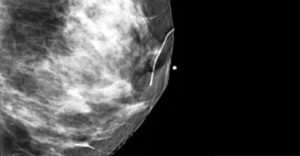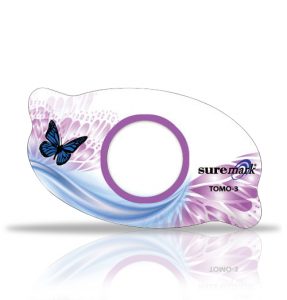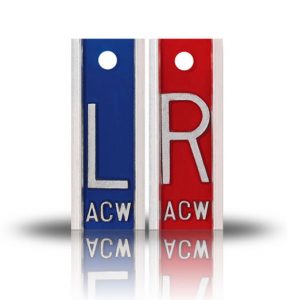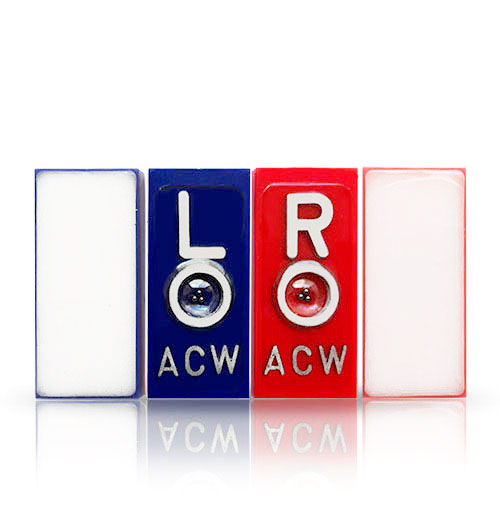
There is a range of markers that can be used to highlight specific areas of skin to facilitate diagnostic imaging. These markers include Mammography Markers, MRI Skin Markers, radiation therapy Markers, Dental Radiopaque Markers, Breast tomosynthesis Markers, CT Imaging Markers, Mole Markers, Nipple Markers, Metal-Free semi-lucent markers, scar tissue wire, bb markers, Cross Reference and lead wire markers.
The different types of skin markers address the needs of technologists and doctors and can be used to help radiologists understand what they are seeing and where they should focus their attention. Skin markers often feature an adhesive that allows them to be placed on the patient’s body prior to imaging and they are often disposable which is a sanitary alternative to permanent conventional x-ray Markers and reduce the risk of infection.
Generally, technologists use two kinds of markers for mammography, Standard Mammography x-ray markers and Mammography skin markers.
- Standard Mammography X-Ray Markers feature a standardized set of abbreviations created by the American College of Radiology (ACR). A good, quality set of mammogram x-ray markers will include R/L/M designations on separate markers and degree markers. The range of markers in these sets allows the technologist to properly identify and label specific mammography images with imprinting. Like the standard left/right markers, there is a standardized color scheme for easy identification of these specialized markers: red for right, blue for left, and yellow for medial.
- Mammography Skin Markers help technologists to provide clear and accurate visualization of nipples, moles, scars, palpable masses, and non-palpable areas of concern. The routine use of skin markers is considered a best practice for mammography as they help improve communication and reduce viewing time and the potential for retakes.
Types Of Skin Markers:
- 3D Breast Tomosynthesis Markers – Clear visualization with the least potential for “slinky” artifacts in 3D mammography compared to other skin markers.
- Mole Markers – Provide certainty that densities on mammography images are moles and not areas of concern.
- Nipple Markers – Immediately identify nipple location as a landmark for precise measurement, help detect motion, and aid in positioning in profile.
- Palpable Mass Markers – Readily identify symptomatic areas and provide permanent documentation that a palpable area was noted.
- Point of Pain Area of Concern Markers – Area of concern or pain markers clarify the area marked by a square as different from any other topographic or palpable area of study during interpretation.
- Scar Markers – Correlate architectural distortion from previous biopsy sites by delineating the exact location of incisions.
Magic X-Ray Markers is a Radiology Xray markers suppliers, founded in 2009, based in California offering exclusive collection of X-ray Markers and a vast assortment of top-notch Radiography Markers.
|Skin Markers |




